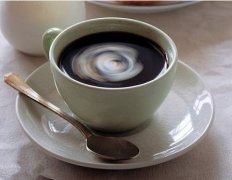Boutique Coffee Culture the proud coffee culture of the Viennese
Coffee is something that Viennese enjoy talking about and are quite proud of. The Viennese even compare it with music and waltz, which is called the "three treasures of Vienna", which shows the relationship between Viennese and coffee. Some people say that Vienna is "five steps and one coffee", which may be an exaggeration by the poet, but it is true that there are a large number of Vienna cafes. From the coffee kiosks around the corner for people to drink standing up, to the coffee shops gathered by students near the university, to the magnificent coffee shops next to the theatre and by the Imperial City, there are at least dozens, some of which open at 06:30 in the morning and do not close until 2 a.m. Therefore, it is not too much to say that the air of the "capital of music" is not only flowing with the rhythm of music, but also filled with the fragrance of coffee.
The history of Viennese drinking coffee can be traced back to the 17th century. At that time, there were many cafes in large and small cities in many Islamic countries, and coffee had become an indispensable part of people's lives. But in Europe, people still don't know what it is. In 1683, Turkey attacked Vienna for the second time, when the Austrian Emperor Augustus II signed a military alliance with King Augustus II of Poland. The fleeing Turkish army discarded large quantities of weapons, ammunition and hundreds of large pockets of mysterious brown beans on the battlefield around the walls of Vienna, and the victorious Viennese did not know what to do with them. As it happens, a Polish spy lurking in the Turkish army, Kohzki, once tasted a thick black drink made from this roasted bean in Constantinople. The Turks called it "Kahve", which is now coffee. As a reward, the Polish received all the coffee seized on the battlefield and opened the first coffee shop in the history of Vienna. Today, there are still many cafes that claim to be the first coffee shop opened by Poles to attract customers. But in the beginning, coffee shop business is not good, Viennese still prefer to drink tea. Later, the businessman changed the recipe and added milk to his coffee, which worked surprisingly well and became popular in the 1780s. People call it "Melange". To this day, although coffee is varied, it is still the most popular drink in Vienna.
Important Notice :
前街咖啡 FrontStreet Coffee has moved to new addredd:
FrontStreet Coffee Address: 315,Donghua East Road,GuangZhou
Tel:020 38364473
- Prev

Coffee culture, common sense, workplace etiquette, coffee
1. Authentic black coffee does not contain sugar, but you can add sugar or milk according to your own taste or habit. 2. Use a small spoon when drinking coffee. It is worth noting that that small spoon has only one function, that is, to stir coffee. So never use it to scoop coffee. When drinking coffee, take out the spoon.
- Next

Common sense of Coffee Culture French and Coffee Culture
When the French conducted a survey of foreign tourists and were asked what was the most attractive thing about Paris, many people answered not places of interest such as the Louvre and the Eiffel Tower, but cafes scattered on the streets of Paris. Someone once compared cafes to the skeletons of France, saying that if they were torn down, France would fall apart. Xu Zhimo also said that if there are no cafes in Paris,
Related
- How did the Salvadoran coffee industry develop in Central America?
- What exactly does the golden cup extraction of coffee mean?
- The Origin of Coffee flower
- [2023 Starbucks World Earth Day] there are more meaningful things besides free Starbucks coffee!
- What kind of coffee is there in Spain? 9 Flavors of Spanish Coffee
- Aromatic African coffee| Kenya's coffee culture and historical production area
- Liberica Coffee Bean knowledge: the characteristics of Liberian Coffee beans of the three original species of Coffee beans
- The origin and formula of Spanish latte introduces the taste characteristics of Bombon coffee in Valencia, Spain.
- How to adjust the solution of over-extracted coffee
- What is the tasting period of coffee beans? What is the period of coffee and beans? How should coffee wake up and raise beans?

